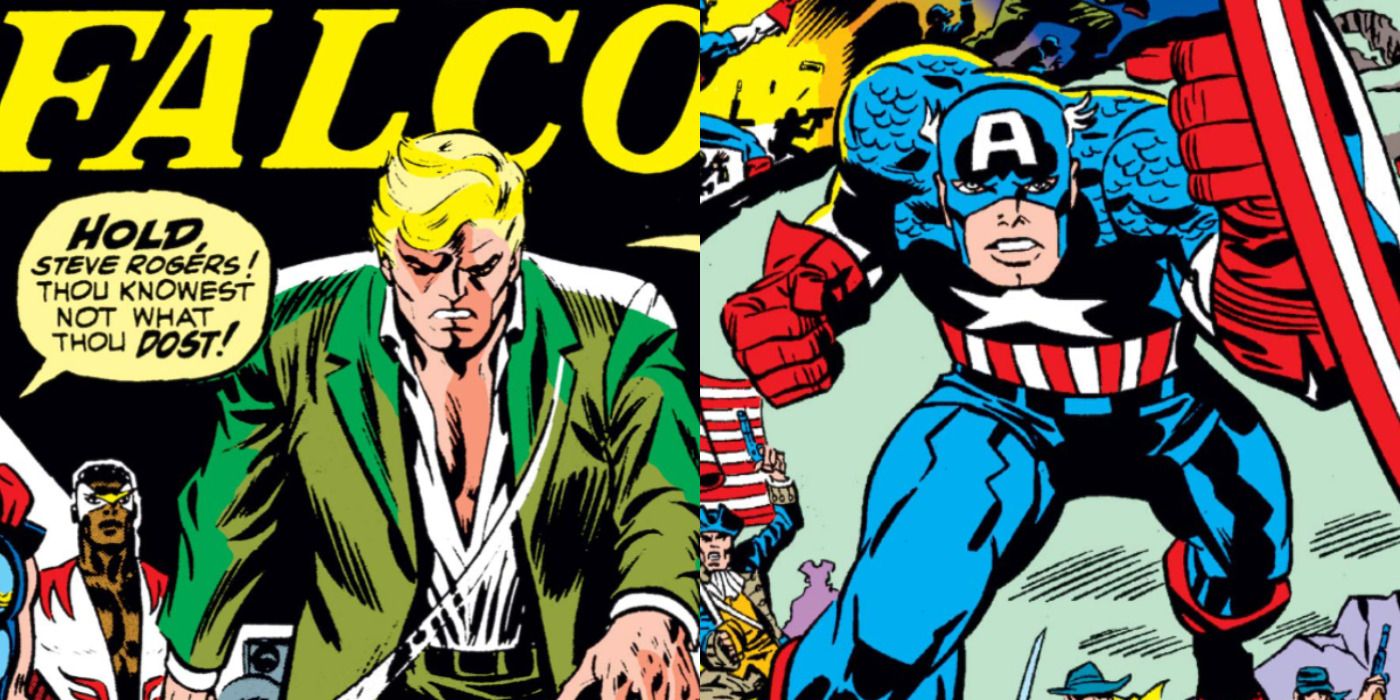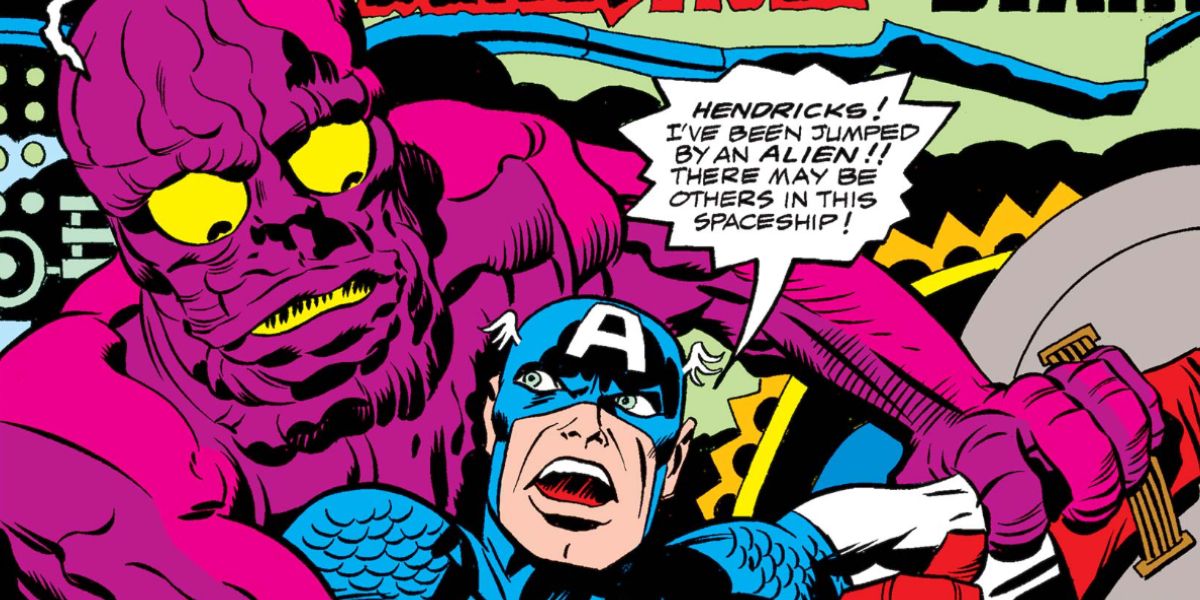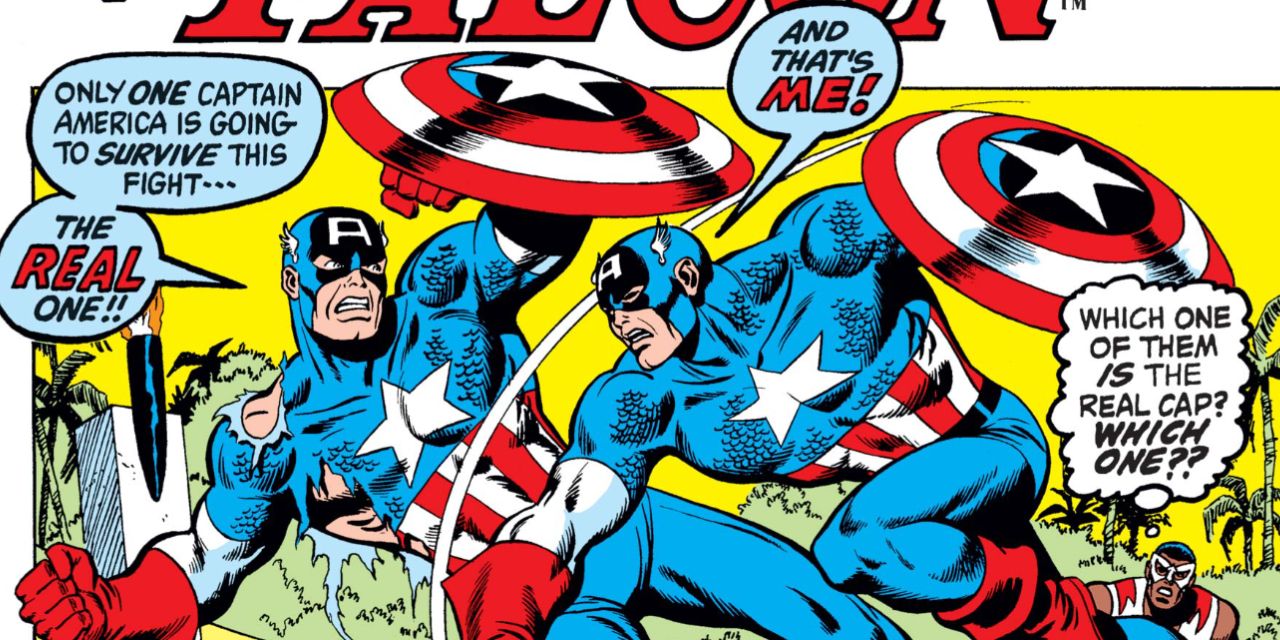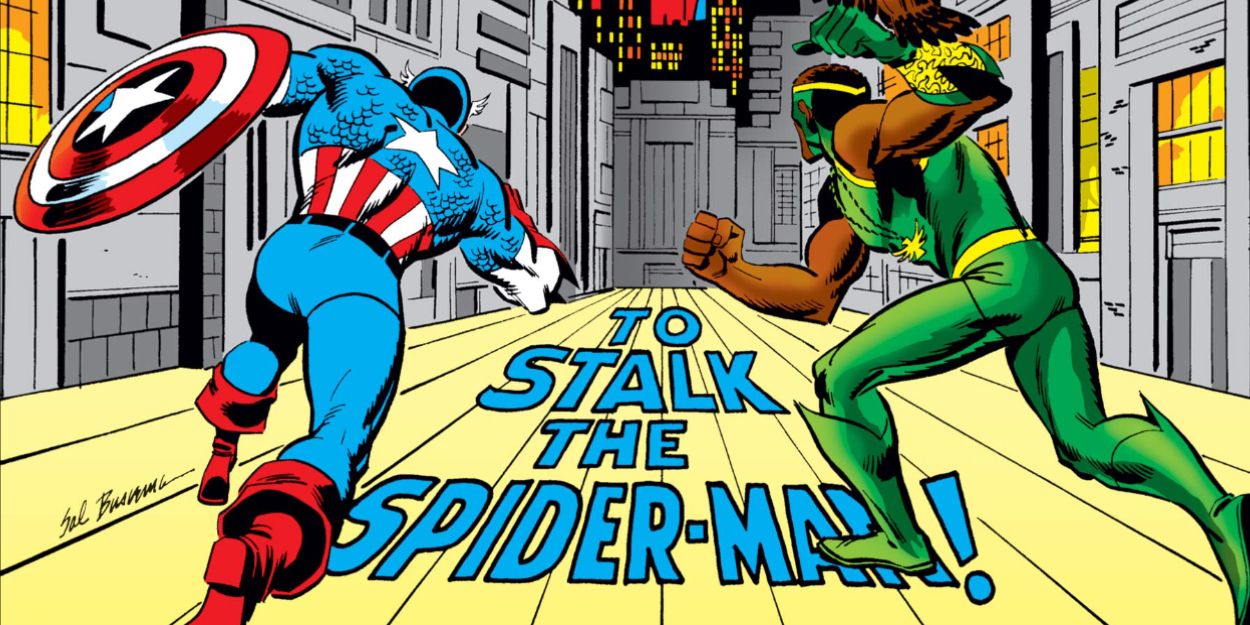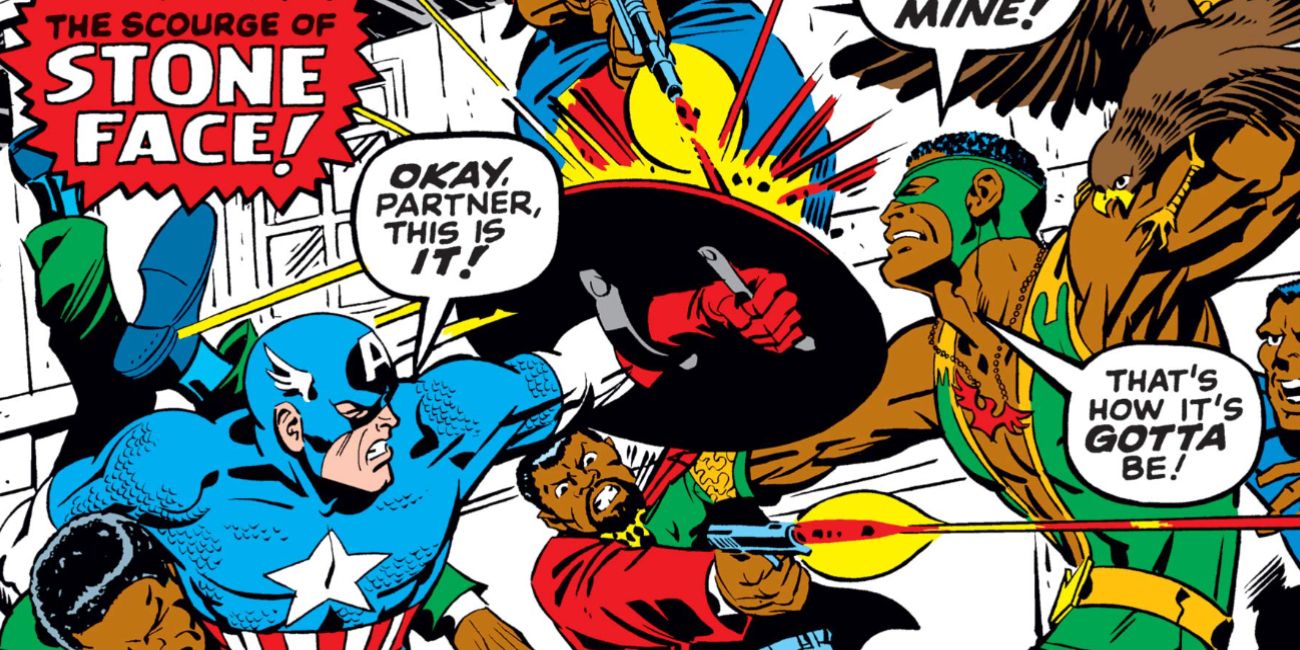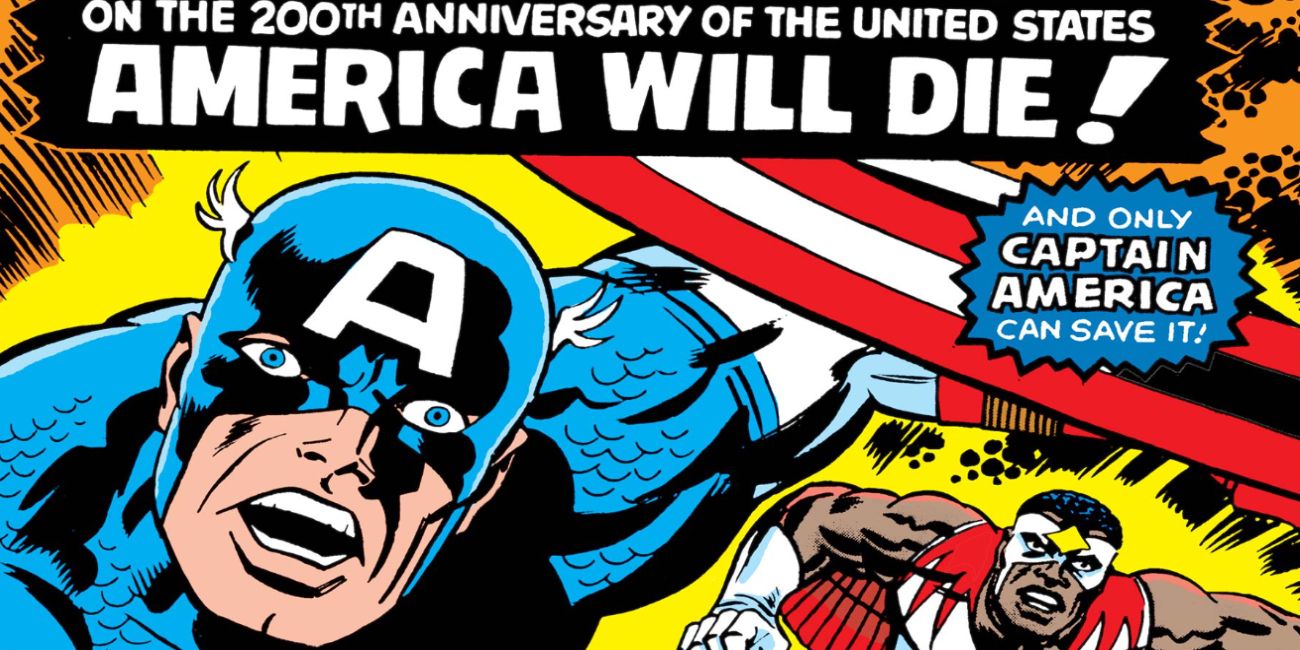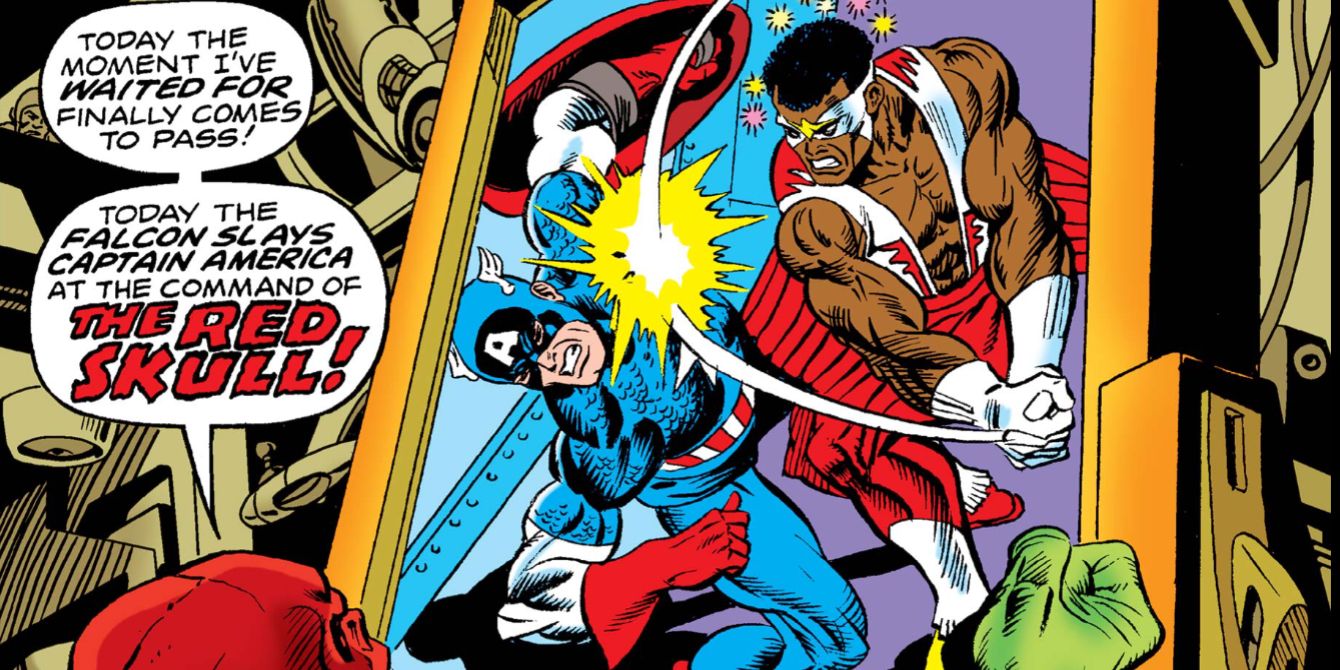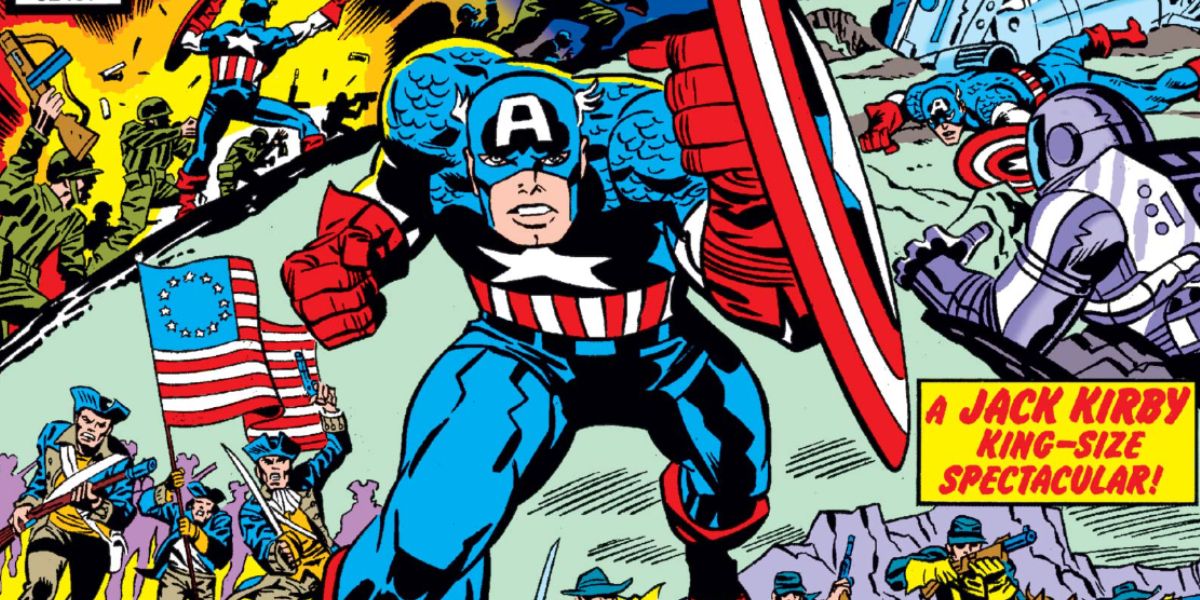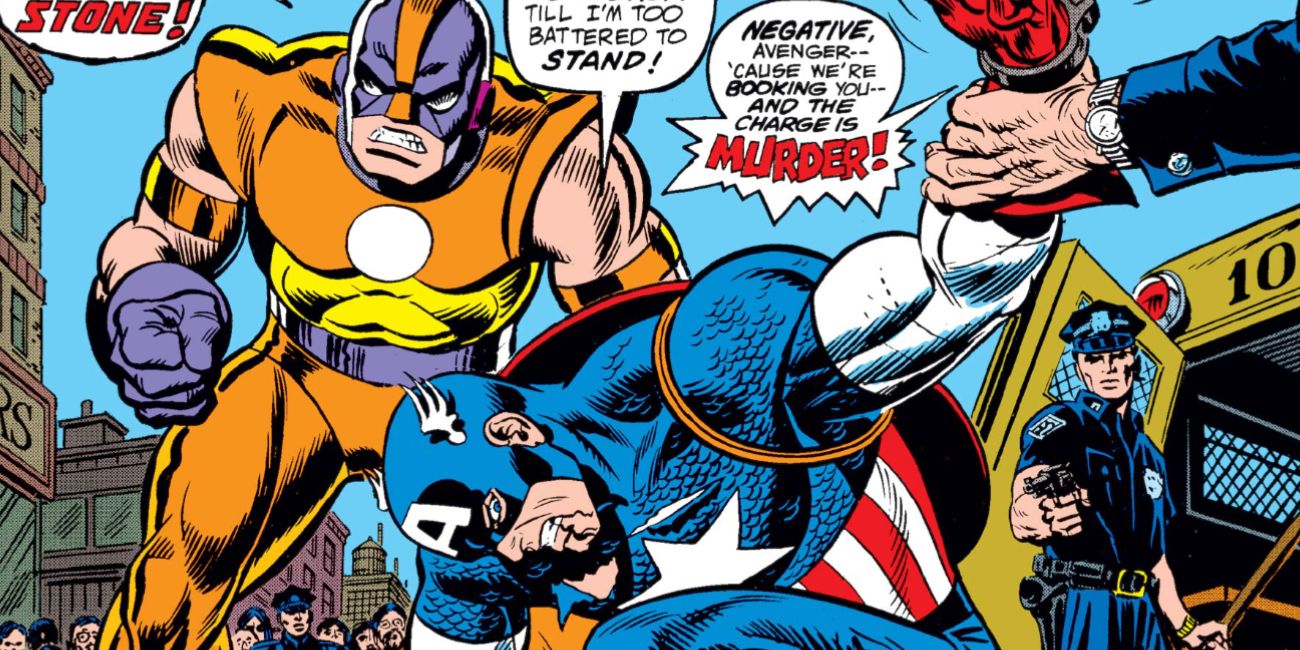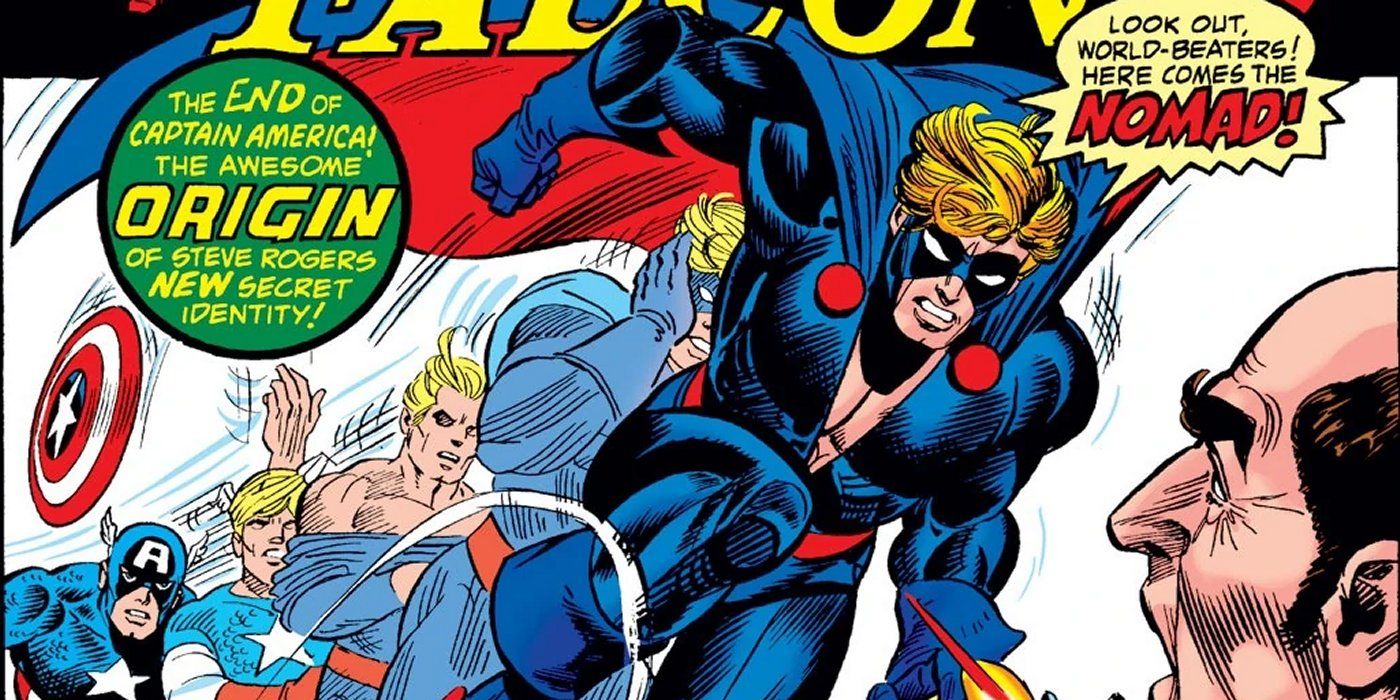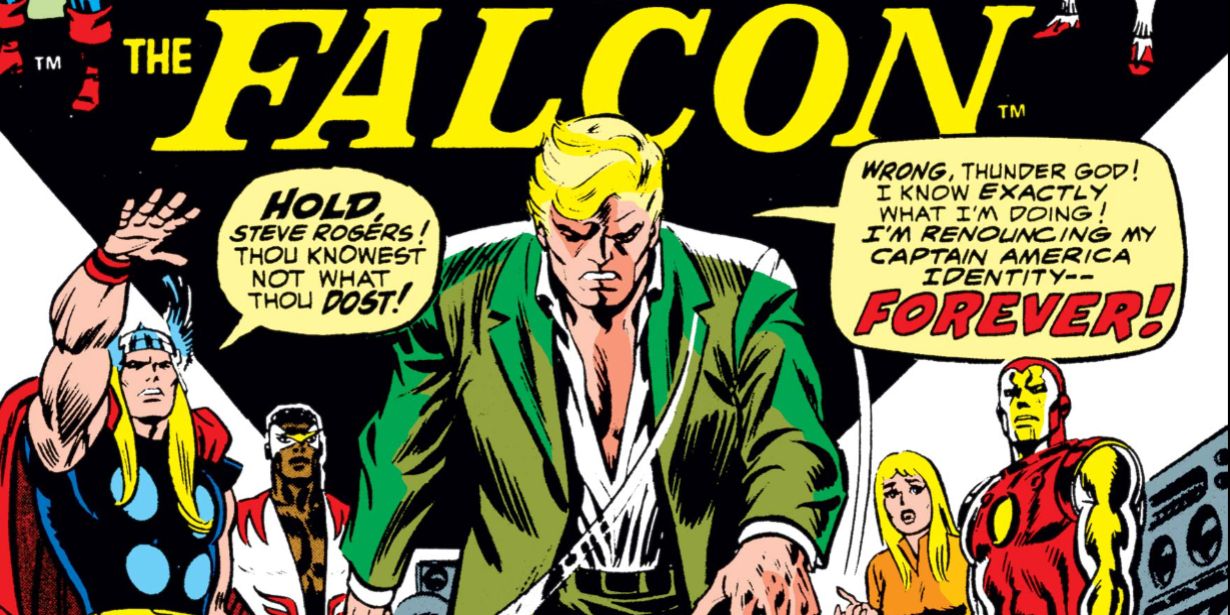Marvel was something like the wild west in the early '70s, with many titles and characters being tried and many undergoing changes. In 1969, Captain America got himself a partner in Samuel Thomas "Sam" Wilson, better known as The Falcon, and the title of Cap's comic was soon changed to Captain America and the Falcon starting with #134 (Feb. 1971) to #222 (June 1978).
Most of the memorable Captain America stories of the era were written by Steve Englehart and Jack Kirby. Englehart wrote many of the memorable arcs of the mid-'70s; he was the one who wrote the stories of Cap's disintegrating belief in the country and created Nomad. Jack Kirby was Cap co-creator and took over upon his return to Marvel from DC. Jack's stories are more fun and inventive than deep, but his Captain America was always action-packed.
Captain America Annual #3, By Jack Kirby - The Thing From the Black Hole Star
A pilot escaping from a black hole is pursued by another alien race bent on his destruction. Captain America fights dozens of robots sent from space to retrieve the pilot, only to discover he is a 'life vampire' set to feed on the people of earth. Cap defeats the alien, who is then flung with his ship into the heart of an exploding star.
Coming after Englehart's run, Kirby was a complete 180, full of cosmic reach and epic fights. Jack Kirby related to Cap, both fought Nazis, both fought battles This is certainly a wild story, full of action, great art, and it just doesn't stop or always make sense. It's a lot of fun, as are most of the '70s Kirby stories. Just don't overthink it and you'll have a good time.
Captain America and the Falcon #153-156, By Steve Englehart - The Other Captain America
The other Cap is William Burnside, a former Captain America. The US recruited Burnside with a Bucky lookalike, Jack Monroeto fight the Korean War. Afterward, they had no use for Burnside, taking the Cap identity from him. The recreated Super-Soldier serum is also unstable, driving him insane with bitterness toward the US and Cap. Burnside and Monroe attack Steve Rogers and Sam Wilson, forcing Cap to fight Cap.
Steve may be forced to battle Burnside, but he knows that the only reason behind the fight is the fact the Burnside and Monroe were ill-used and mistreated by the government they trusted, that he trusted. This throwing away of a loyal soldier is a big factor in what leads to Steve turning his back on the Captain America identity, making it a hugely important installment.
Captain America and the Falcon #137-138, by Stan Lee and Gene Colan - To Stalk the Spider-Man
With the addition of the Falcon as a partner, the book took on a more psychological tone. Captain America was questioning his duty more and more and Falcon was insecure about his abilities to live up to his legendary partner. Falcon decides to prove his worth by hunting down the notorious outlaw, Spider-Man.
While Spidey is able to evade Falcon, in doing so Falcon is captured by the criminal, Stone Face. Spidey rescues Falcon, and Cap, Falcon, and Spider-Man all team up to take Stone Face down. While not the most important story, it's the first Spidey/Cap team-up and brings together two characters, Spider-Man and Falcon, who both ace some of the same issues of insecurity in their own skin and being alone in the world.
Captain America and the Falcon #134, by Stan Lee - They Call Him Stone Face
This is the story where things start to fall in place for the Team of Captain America and Falcon. In this issue, they take on the Harlem crime boss Stone Face and rescue Sam's nephew Jody from a life of crime.
Here where the partnership gels and the two become friends and a team. Falcon is added to the title with this issue, adding to the overall importance of this story. The story also shows Falcon as a man with integrity who cares about his neighborhood and community. It shows why he wanted to be a social worker and the honor that made Cap choose him in the first place.
Captain America and the Falcon #193-200, by Jack Kirby - Madbomb
The Madbomb was literally a bomb that would drive people insane. The Royalist Forces were using the bombs to destroy democracy and they have one super Madbomb big enough for the entire country, so Cap and Falcon have to stop them and defuse the bomb.
The Madbomb saga finds Cap and Falcon at odds, as Captain America is more resistant to the impact of the Madbomb, while Sam is greatly affected and enters training to reinforce his immunity to fight off the effects. The story ends with Cap and Falcon renewing their partnership on a much more even and equal level. Kirby didn't always make sense on his Cap run, but he never slowed down.
Captain America and The Falcon #186, by Steve Englehart and John Warner - Mind Cage
The readers find out the truth about Sam's secret past! While introduced as a Harlem social worker who likes falcons, it is revealed by the Red Skull that Sam used to be a criminal. This past life was covered up by the use of the cosmic cube, leaving Sam torn and unsure of what to believe.
Whether this is true or not is never really settled. The Red Skull is known to lie and the whole thing was quietly dropped by later creative teams. Frankly, it undercuts Sam's character to make him a former criminal and plays into stereotypes they were working to avoid otherwise. Better to leave it in the past and let Sam have his life.
Captain America's Bicentennial Battles, Written by Jack Kirby - Bicentennial Battles
For America's Bicentennial, Jack Kirby wrote Captain America's Bicentennial Battles, an oversized Marvel Treasury. Presented as one overall story, it's five tales tied together by 'Mister Buda.' Buda takes Cap on a journey through American history, first in WW2 to rescue Bucky, then the 1770s, the old West, the Civil War, the Manhatten Project, the Chicago Fire, and finally into the future landing on the moon.
Mister Buda's purpose is to get Captain America to realize his place in history and American society. At the end of his journey, witnessing a future fight on the moon, Cap realizes there will always be a fight and all he can do is trust the American people and show them the way. Not the most important '70s Cap story, but during the post-Watergate era, probably the most patriotic. The oversized Kirby art, the time-traveling, the appearance of Bucky, and the Red Skull all make it a special event.
Captain America and The Falcon #169-171, written by Steve Englehart and Mike Friedrich - When a Legend Dies/J’Accuse/Bust Out
In these three issues, the Falcon finally gets his iconic wings, making him stand out against the super-powered Cap. The wings are a gift from the Black Panther and use Wakandain technology to have Sam fly.
With the addition of the wings, Sam becomes more than just a 'costumed athlete,' and they complete his transformation into a full superhero. Sam now has abilities Steve doesn't and is an even more capable and valuable team member. This increases his comfort in the role and makes him feel a more equal partner with Cap.
Captain America and the Falcon #177-186, written by Steve Englehart - Nomad
Cap's faith is now shaken to the core and his faith in America itself is gone. He feels if he can no longer believe in America, he can no longer wear its colors. He abandons the Captain America uniform but not the fight for justice, so he dons a dark blue/black uniform with a cape, calling himself 'Nomad.'
More than just a tagline, 'The Man Without a Country' is Steve Rogers now. Cap abandons the Captain America identity and for the first time, he questions his ultimate role. Englehart takes away that essential aspect of Cap, his trust in the country he loves. Without a country, he still feels the need to help people and even without the shield, he has to fight the injustice he sees in the world.
Captain America and the Falcon #172-176, by Steve Englehart and Sal Buscema - The Secret Empire
Captain America has to fight an invisible government conspiracy to take him down. Keyed to Watergate and Nixon, in this story, Cap's trust and faith in the system he had faithfully served is torn away from him.
Captain America always kept his faith in democracy and the American ideal. "The Secret Empire" left him shaken and searching. Steve Rogers abandons his shield and 'Captain America,' walking from the burden and joy of being America's protector because he has some thinking to do.

